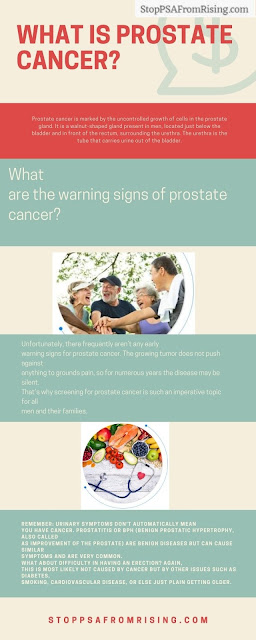What is Prostate Cancer and what are its types?
Prostate Cancer begins when cells in the
prostate gland begin to grow out of control. The prostate is a gland found solitary
in males. It makes some of the liquid that is part of semen. It is located
below the bladder and in front of the rectum. Just behind the prostate are
glands called seminal vesicles that make most of the fluid of the semen. The
Urethra is the tube like structure that carries that carries urine and semen
out of the body through the penis, goes through the center of the prostate.
The size of the prostate cancer can
change as man ages. In younger man, it is about the size of a walnut, but it
can be much larger in older man.
Types
of prostate cancer
Almost all types of prostate cancers are
adenocarcinomas. These cancers expand from the gland cells.
Other sorts of cancer that can start in
the prostate include:
·
Small cell carcinomas
·
Neuroendocrine tumors
(other than small cell carcinomas)
·
Transitional cell
carcinomas
·
Sarcomas
These other types of prostate cancer are
unusual If you are told you have prostate cancer, it is almost sure to be an
adenocarcinoma.
Some prostate cancers grow as well as
increase quickly, but most grow slowly. In fact, autopsy studies show that many
older men who died of other causes also had prostate cancer that never
exaggerated them during their lives. In numerous cases, neither they nor their
doctors even knew they had it.
Some research proposes that prostate
cancer starts out as a pre-cancerous condition, although this is not yet known
for certain. These conditions are sometimes found when a man has a prostate
biopsy (elimination of small pieces of the prostate to look for cancer).
However, we at StopPSAFromRising have
one-stop solution for Prostate Cancer. We provide PSA Protocol herbal formula
to cure prostate cancer and its associated symptoms. Visit our official website
to buy now!



Comments
Post a Comment